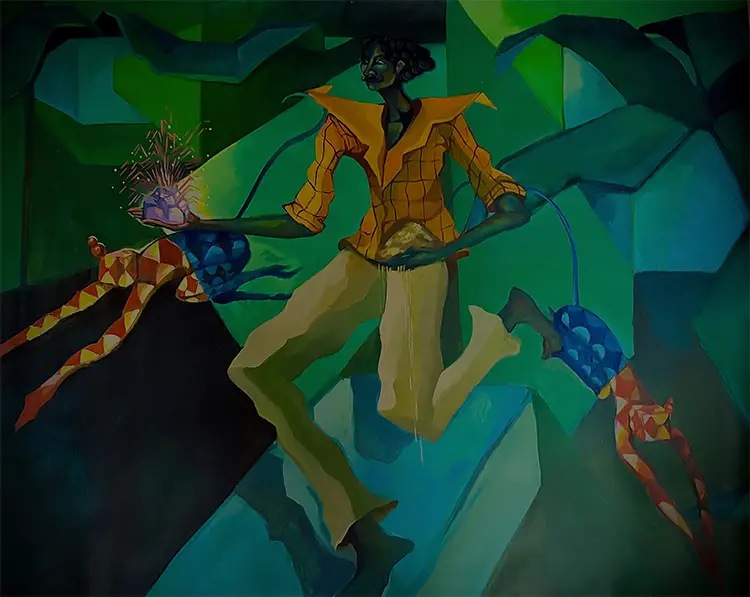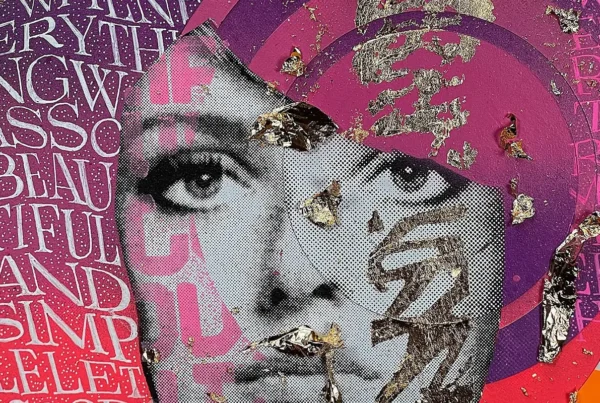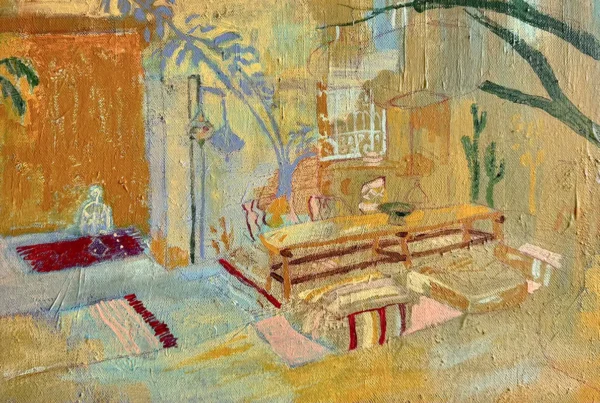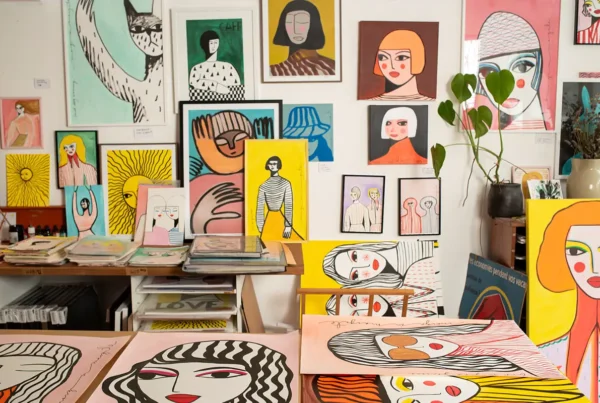“Art consumes you. It is an extension of yourself, that is impossible to satiate.”
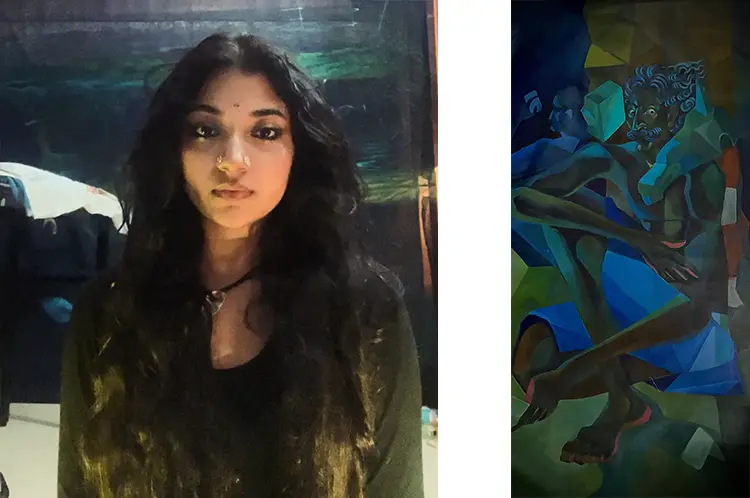
Beyond the Canvas: Childhood Silences and Cityscapes Reimagined
In the quiet corners of Chennai, where rows of geometric buildings brush against the sky and trees persist in slender strips of space, artist Poorvaja Rathi found the initial spark for her visual language. Identifying as a Tamil painter, Rathi has cultivated a rich and imaginative artistic voice rooted in her early years of quiet observation. Speaking more through drawing than through words, she tuned into the subtle textures of her environment, letting the hum of the city, the rustling of trees, and the murmurs of life shape the foundation of her creative intuition. Her fascination with the interplay between structured architecture and remnants of nature evolved into a deeper curiosity about the urban design of Chennai, a place that remained both a literal and emotional landscape throughout her development as an artist.
Her ongoing exploration is centered around the tension between rigid, human-made constructs and organic, resilient life. Rathi often reflects on her childhood experiences of sitting in trees, observing how buildings and greenery jostled for space in the urban sprawl. This spatial friction became a metaphorical lens for her work, reinterpreting the “Cubes” as male-dominated architecture and the “Hollows” as pockets of matriarchal life forces trying to persist. Through this duality, she questions systems of power and care, control and chaos, while investigating how cities are engineered to prioritize some lives over others. This conflict becomes more than aesthetic—it is deeply political, rooted in her understanding of space, gender, and survival.
Chennai is not just a backdrop for Rathi’s work; it is an active, complex participant. The evolving skyline, disappearing water bodies, and congested alleyways of her city inspire many of the characters that inhabit her paintings. These recurring figures are often liminal beings navigating or resisting their surroundings, mirroring the psychological weight of existing within rapidly changing urban spaces. Art, for Rathi, is an intense and consuming act—one that doesn’t allow for detachment. It presses on her, asks questions, and creates an internal dialogue that refuses closure. This emotional proximity is what makes her work deeply personal and unwavering in its commitment to emotional truth.
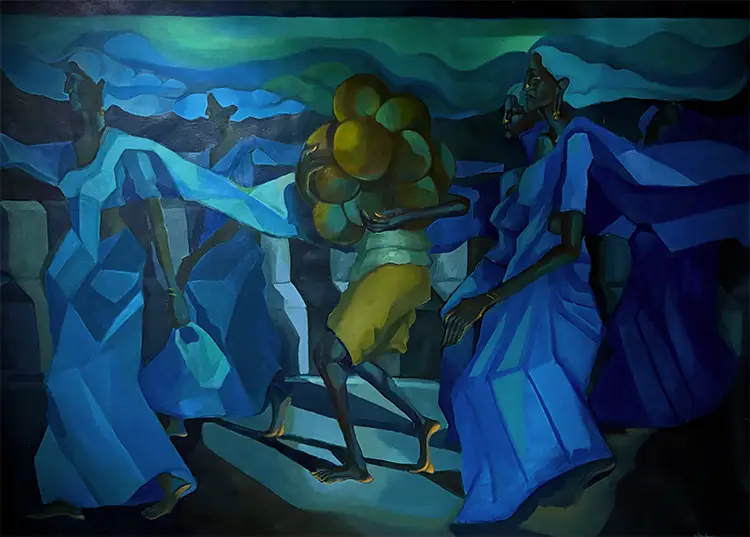
Poorvaja Rathi: Character as Echo, Composition as Resistance
In 2021, Rathi’s visual narrative took a transformative turn after encountering news stories about monkeys intruding into administrative buildings. What began as a curiosity quickly spiraled into a deep investigation of power, displacement, and animalistic response. The monkey evolved into a central character in her artwork—eventually becoming the box-headed monkey that embodies the satirical tension within corridors of authority. This creature is not merely an intruder but a mirror, reflecting the absurdities and ironies of how power interacts with both nature and rebellion. Alongside the monkey, she birthed other figures like “Veeraiyya,” a time traveller, and the “Earthens,” ambiguous beings born from Tamil landscape poetics, particularly the coastal imagery of “Neidhal,” which traditionally symbolizes longing and separation.
These characters are more than symbolic figures; they function as narrative devices that populate a speculative dimension of Chennai. The “Earthens” in particular take center stage in her installation titled The March. Cloaked in fabrics and commanding space through exaggerated barricades, these liminal bodies articulate the consequences of urban expansion. Rathi speculates that the suppressed rage of displaced natural elements—particularly water—materializes through these figures. Many of Chennai’s roads are built over historic water bodies, and she imagines the discontent of this buried force surfacing in humanoid forms. Her figures move through city streets not as intruders, but as entities reclaiming attention, demanding that we notice the cost of unchecked urban development.
Sound is another elemental force in her process. From the cacophony of daily life to subtle, overlooked noises—such as the flapping of wings, the whisper of elderly footsteps, or the distant rush of water—Rathi creates by tuning into what others ignore. This auditory sensitivity shapes her visual output. She often finds herself stepping away from the immediate present, disconnecting from the city’s hectic pace in order to truly hear what lies beneath it. These soundscapes infiltrate her characters, saturating them with a presence that is both haunting and poetic. Through wide, gaping eyes overwhelmed by whiteness, her figures appear possessed by inquiries that leave them in a perpetual state of psychic unrest.
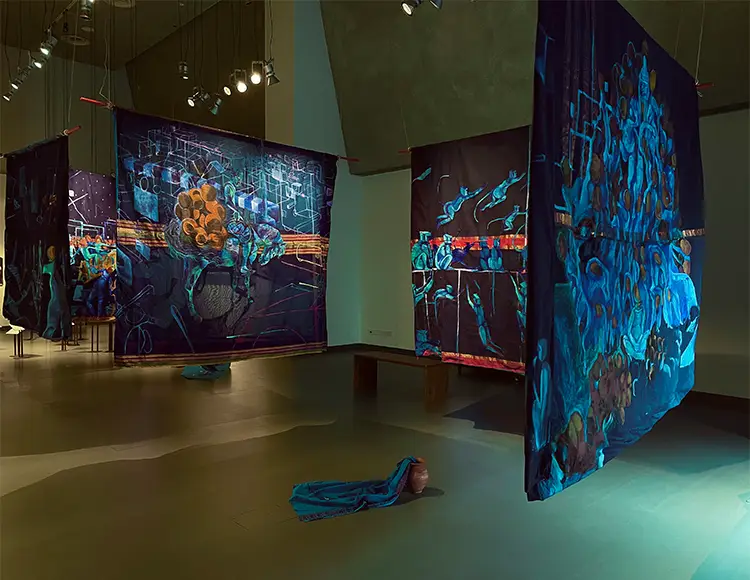
Fabric, Flesh, and the Shape of Resistance
Poorvaja Rathi’s visual compositions are charged with tension—between containment and escape, silence and confrontation. In her work, the female body often emerges as a powerful subject, yet it is rendered without a face. This absence directs focus to the body’s physical expressions, allowing emotions to radiate through posture, skin, and movement. The series titled The Face is Familiar exemplifies this approach. Here, Rathi explores how the body’s every pore becomes a listening surface, reacting viscerally to its surroundings. The facelessness liberates her subjects from specific identities, making them vessels of collective experience and embodied resistance within rigid cityscapes.
The iconic box-headed monkey recurs as a silent witness, a mime that echoes the chaos and contradictions of the worlds it inhabits. This figure never dominates the canvas but engages in complex conversations with other elements, reflecting a fractured, often absurd emotional logic. The juxtaposition of faceless female bodies and animated hybrid figures creates scenes filled with surreal dynamism. Rathi leans heavily into the absurd as an aesthetic strategy, allowing her compositions to remain open-ended and unsettled. The result is a visual tension that invites viewers to linger, question, and eventually surrender to the intensity of the gaze and gesture.
Material choice is central to Rathi’s practice. Moving beyond traditional canvas, she incorporates elements such as sarees—textiles worn by Tamil women—as both surface and symbol. The saree, with its layers of memory and cultural resonance, acts as both medium and message. In installations like The March, the fabric becomes an enveloping presence, towering around the viewer and creating an environment that is simultaneously intimate and overpowering. This approach speaks to Rathi’s discomfort with static display. For her, the work must move, breathe, and respond to space. She often employs light to intensify the drama within her installations, crafting immersive environments that blur the line between viewer and artwork.
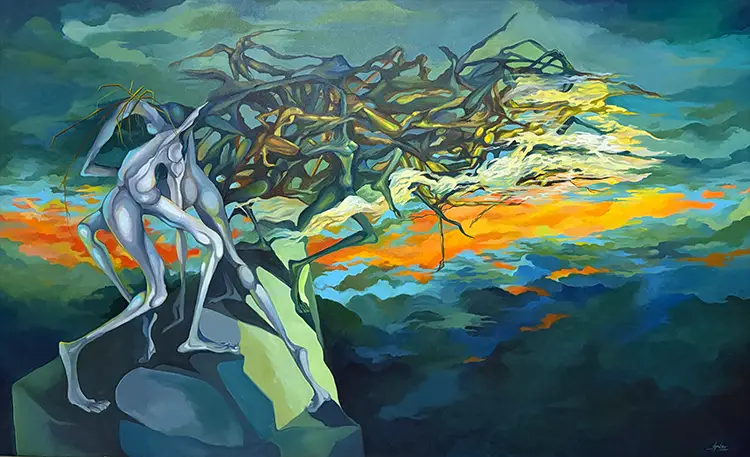
Poorvaja Rathi: The Dance of Intuition and Absurdity
Painting, for Rathi, is not a linear or calculated task but a spiraling process led by instinct and improvisation. While a vague structure might exist at the start, she allows her hand to be guided by spontaneous decisions, trusting her internal compass over rational design. This intuitive approach often leads her into an absurd visual language that she embraces fully. The characters and compositions emerge from an uninformed gaze—one that notices mundane objects or gestures without assigning immediate meaning. Only later, in moments of reflection, does the underlying intent begin to surface, turning the completed artwork into a mirror that surprises even her.
The psychological distance she creates during her process allows her to break free from material constraints. She describes a sensation of momentarily departing the physical world while immersed in her work. This dislocation produces pieces that feel unanchored by time or place, existing instead in a liminal psychological space. Her studio—an improvised extension of her living environment—becomes both sanctuary and battlefield. It’s within this space that she dances between paint tubs, shuffles through large canvases, and navigates the physical remnants of her artistic world. The interstitial spaces left between artworks in her studio mirror her own lifestyle: one lived in the gaps between memory, material, and meaning.
Teaching art to children and teenagers forms the counterbalance to her solitary painting life. Through instruction, she has learned to pause and recalibrate, recognizing the importance of slowing down in a culture that demands acceleration. Despite art occupying the majority of her internal and external space, she cherishes the quiet intervals between creative bursts. Her future ambitions reflect the same scale and emotional magnitude seen in her existing work. Among her most anticipated projects is a large-scale installation titled TAR, slated for exhibition in 2026. As with all her creations, this forthcoming work is likely to confront, envelop, and challenge its audience—turning passive viewing into a participatory act of witnessing.
